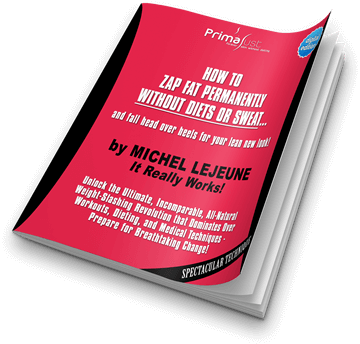Maintaining an optimal weight is a goal that many of us aspire to achieve. However, it’s not just about counting calories or hitting the gym regularly; the environment in which we make our food choices plays a significant role in our weight management journey. In this blog, we’ll explore the positive impact of food environment on optimal weight control and delve into strategies to create a healthier food environment for yourself and your community.
What is the Food Environment?
 The term “food environment” encompasses all the physical, economic, social, and cultural factors influencing our food choices.
The term “food environment” encompasses all the physical, economic, social, and cultural factors influencing our food choices.
It’s the context in which we decide what to eat and how much.
The food environment is complex and multifaceted, from the availability of certain foods to the cues in our surroundings.
The food environment extends beyond the supermarket shelves and restaurant menus; it includes everything from our home kitchens to the daily food advertisements.
Recognizing this broad scope is essential in understanding its influence on our eating habits and, subsequently, our weight.
Types of Food Environments
1. Urban Food Environment
 Urban areas are characterized by densely populated regions with a bustling lifestyle.
Urban areas are characterized by densely populated regions with a bustling lifestyle.
In such environments, convenience often takes precedence, leading to the proliferation of fast-food restaurants, convenience stores, and vending machines.
These establishments usually offer highly processed, calorie-dense, and less nutritious options.
The fast-paced urban lifestyle can also contribute to irregular eating patterns, such as frequent snacking and dining out.
2. Rural Food Environment
 Rural areas present a contrasting food landscape.
Rural areas present a contrasting food landscape.
Access to fresh, locally sourced foods like fruits, vegetables, and grains can be more abundant here.
Farmers’ markets, roadside stands, and community-supported agriculture thrive in rural settings, providing residents with direct access to wholesome, seasonal produce.
However, limited access to specialty stores and healthcare facilities in rural areas can present challenges in maintaining a balanced diet and addressing health-related issues.
3. Home Food Environment
 Our homes play a crucial role in shaping our food choices.
Our homes play a crucial role in shaping our food choices.
The foods we keep readily available in our kitchens influence our daily meals.
A well-stocked kitchen with various fruits, vegetables, lean proteins, and whole grains encourages healthier eating habits.
On the other hand, a kitchen filled with processed snacks and sugary beverages can lead to less nutritious choices.
4. Socio-economic Food Environment
 Socioeconomic status significantly impacts food access and choices.
Socioeconomic status significantly impacts food access and choices.
Low-income neighborhoods often need more access to grocery stores offering fresh, affordable produce, leading residents to rely on convenience stores and fast-food outlets, which tend to show fewer healthy options.
Conversely, higher-income areas usually have better access to a diverse range of nutritious foods.
5. Workplace and School Food Environment
 The food environment at workplaces and schools can influence eating habits.
The food environment at workplaces and schools can influence eating habits.
Employers and educational institutions prioritizing health may offer cafeteria menus with balanced meals and snacks.
Conversely, environments where unhealthy foods are readily available in vending machines and cafeterias can encourage poor dietary choices.
6. Food Deserts
 Food deserts are often found in urban and rural settings where residents have limited access to affordable and nutritious foods.
Food deserts are often found in urban and rural settings where residents have limited access to affordable and nutritious foods.
These regions need grocery stores and fresh food retailers, making it challenging for individuals to make healthy choices.
Food deserts are associated with higher rates of diet-related diseases such as obesity and diabetes.
Impact of Food Environment on Eating Habits
Food Environment and Food Choices
 The food environment profoundly influences the choices we make.
The food environment profoundly influences the choices we make.
When surrounded by unhealthy options, selecting nutritious foods is more challenging.
Fast-food chains, for example, often have menus laden with high-calorie, low-nutrient items, making it tempting to opt for these choices.
In contrast, a food environment with abundant fresh fruits and vegetables makes incorporating them into your diet more accessible.
Food Environment and Portion Sizes
 Portion sizes are another aspect influenced by the food environment.
Portion sizes are another aspect influenced by the food environment.
Restaurants often serve oversized portions, contributing to excessive calorie consumption.
This phenomenon, known as “portion distortion,” can lead to weight gain over time.
Smaller, reasonable portion sizes are encouraged in a more health-conscious food environment, promoting better weight control.
Food Environment and Snacking Habits
 Snacking is a standard part of our eating habits, and the food environment plays a role in these choices.
Snacking is a standard part of our eating habits, and the food environment plays a role in these choices.
Individuals are more likely to reach for sugary, high-calorie options in an environment where unhealthy snacks are readily available.
Conversely, individuals tend to make better choices in settings with healthier snack choices.
The availability of nutritious snacks can positively impact overall calorie intake and weight control.
The Role of Food Environment in Weight Control
Food Environment and Weight Gain
 The impact of a poor food environment on weight gain is significant.
The impact of a poor food environment on weight gain is significant.
An obesogenic food environment, characterized by abundant unhealthy options and limited access to nutritious foods, can contribute to obesity.
Studies have shown a clear connection between the prevalence of fast-food outlets and higher obesity rates in certain areas.
This underscores the importance of understanding and addressing the food environment’s role in weight gain.
Food Environment and Weight Loss
 On the flip side, modifying the food environment can be a powerful tool for weight loss.
On the flip side, modifying the food environment can be a powerful tool for weight loss.
Creating an environment that promotes healthier food choices can make it easier for individuals to manage their weight effectively.
For example, workplaces and schools that offer nutritious meals and snacks can support employees and students in their weight loss efforts.
Creating a Positive Food Environment
Taking control of your food environment begins with personal strategies.
Here are some tips to help you navigate your food environment for optimal weight control:
- Meal Planning: Plan your meals and snacks ahead of time to ensure you have access to healthy options.
- Mindful Eating: Practice mindful eating to become more aware of your food choices and avoid mindless snacking.
- Grocery Shopping: Make a list prioritizing fresh fruits, vegetables, lean proteins, and whole grains.
- Home Environment: Stock your kitchen with nutritious foods, making them the most accessible options.
Community and Policy Interventions
Individual efforts are essential, but broader community and policy-level changes can create a more supportive food environment for everyone.
Community initiatives like farmers’ markets and gardens can increase access to fresh, locally sourced foods.
Additionally, government policies that promote healthy food options and limit the marketing of unhealthy foods can positively impact the food environment at large.
Health Benefits of a Positive Food Environment
The positive impact of a healthy food environment extends beyond weight control.
It can improve overall health by reducing the risk of chronic diseases such as heart disease, diabetes, and certain types of cancer.
When individuals and communities prioritize nutritious foods, the collective health of the population improves, resulting in fewer health-related burdens on society.
Conclusion
In conclusion, the “Impact of Food Environment” on our eating habits and weight control is undeniable.
Understanding how our surroundings influence our choices is the first step toward making positive changes.
Whether you’re looking to improve your own food environment or a community advocate working to create healthier options for all, promoting a positive food environment can lead to better weight control and improved long-term health outcomes.
So, let’s take charge of our food environments and make choices that support our well-being.
Are you intrigued by the profound influence of your food environment on your eating habits and weight control?
You've just explored the significant impact it can have on your choices, from the temptation of fast-food chains to the availability of nutritious snacks.
But here's the exciting part – you don't have to go through the journey of optimizing your food environment alone.
We've got the perfect solution for you!
Introducing the PrimaJust weight loss method, a revolutionary approach that leverages your understanding of the food environment to supercharge your weight loss journey.
Download our still free report today and discover "The Exact Method to Unlock Your Metabolism for All-Natural Weight Loss, Enabling You to Lose 1-3 Pounds Per Week Automatically—No Diet or Exercise Needed!"
It's time to take charge of your food environment and make choices that support your well-being.
Don't miss out on this opportunity to transform your life.
Download the report now and start your journey toward healthier living!
[Source]Free Report
If you have any questions or comments, please leave them below.
Take your understanding to the next level with these must-read related blog posts
-
The Impact of Food Advertisements: 7 Powerful Insights on Weight
Food advertisements are everywhere, bombarding us with delicious images of tempting treats and mouth-watering meals.…
-
Powerful Benefits of Tracking Food to Help You Lose Weight
In the quest for effective weight loss, tracking food consumption and exercise can be a…
-
Food Labels for Weight Loss: Your Guide to Smart Choices
In today's fast-paced world, where convenience often trumps health, it is crucial to equip ourselves…













